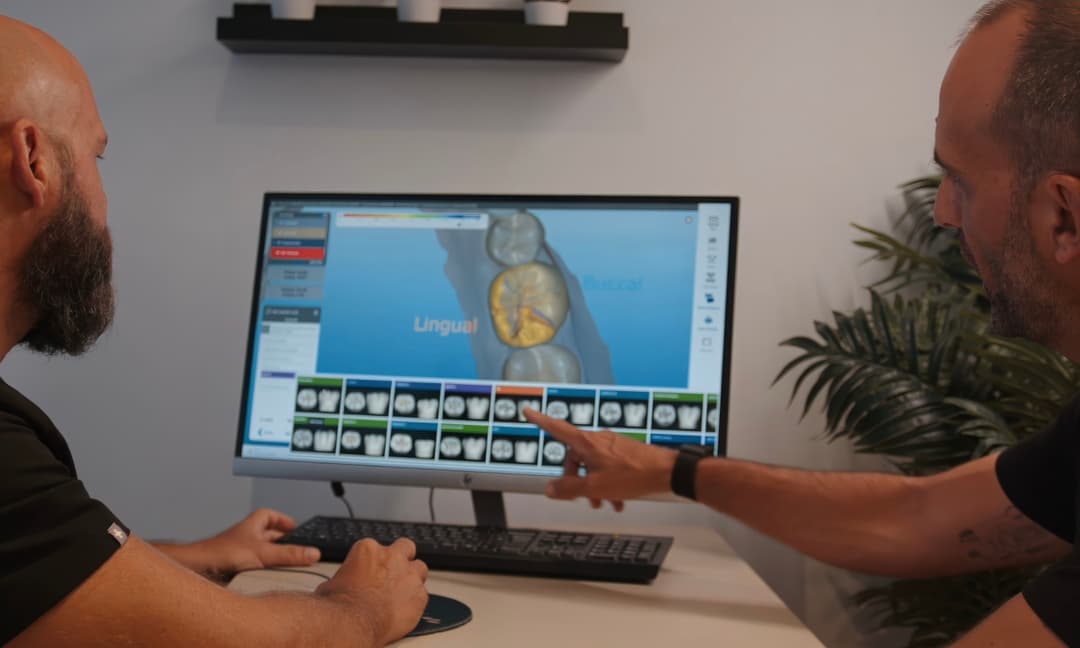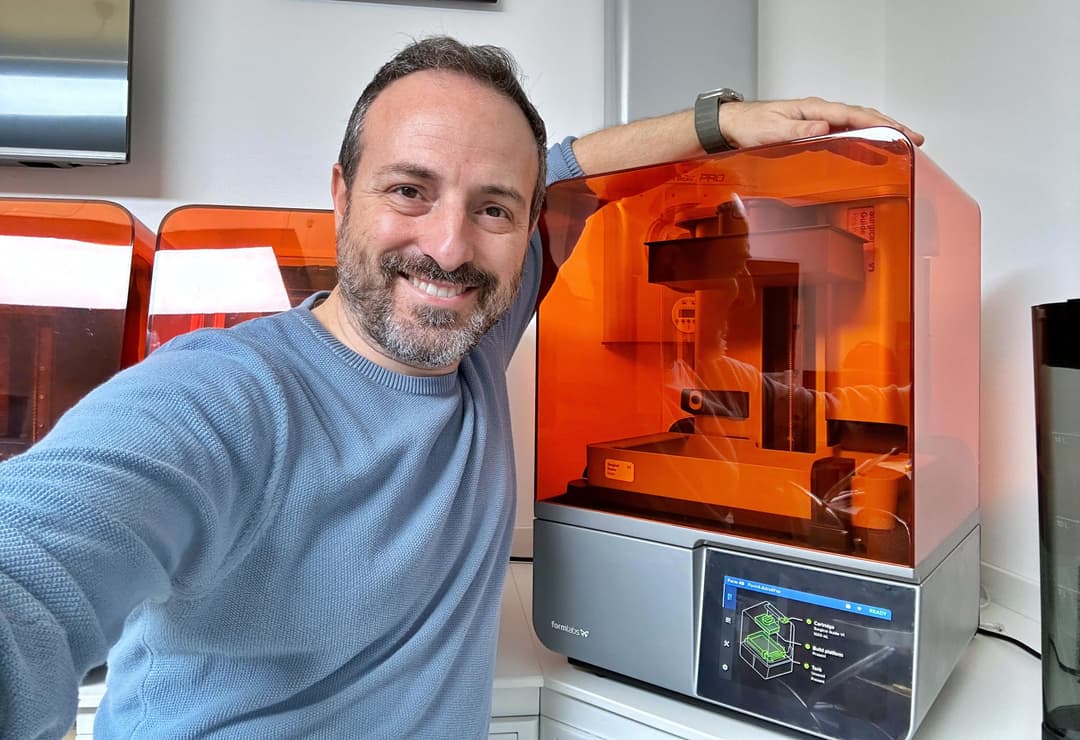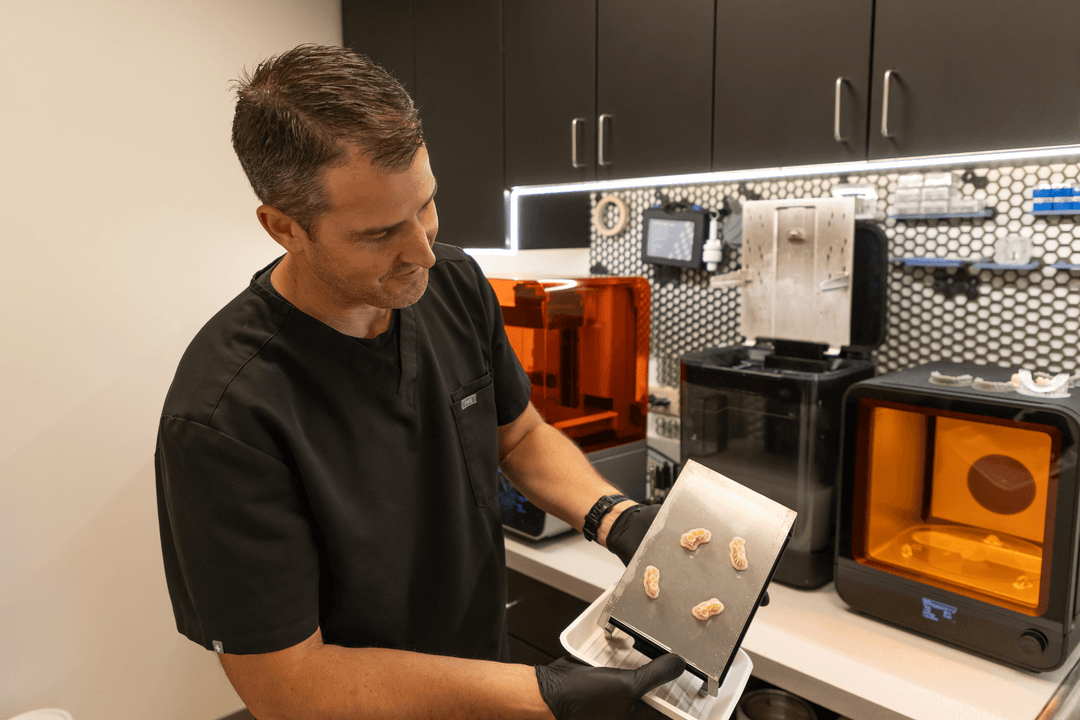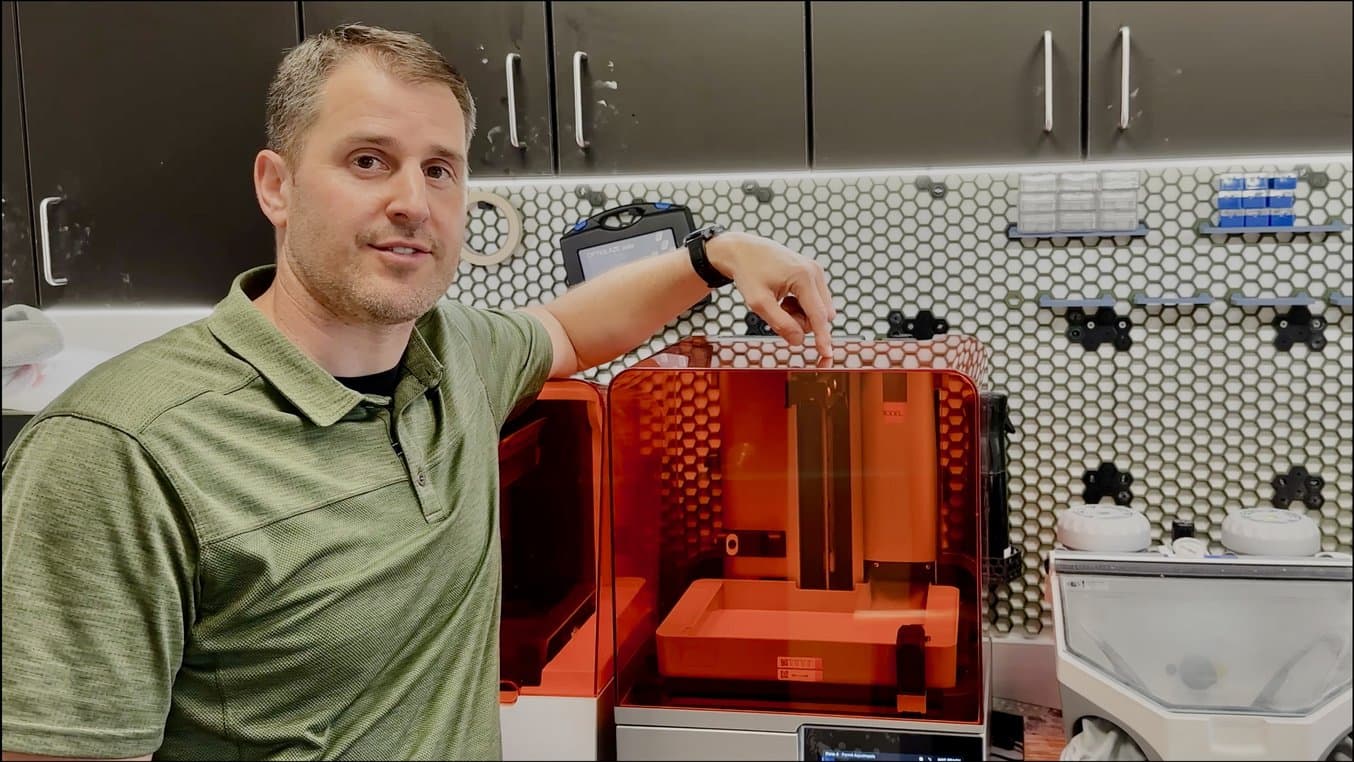
As a dentist running a general practice, speed is of the essence as reduced chair time means reduced costs and improved patient comfort. Dr. Christopher Baer, DMD, of Baer Dental, a general dental practice in Lone Tree, Colorado, leverages the power of 3D printing for making models for retainers, custom whitening trays, wax-ups, temporary and permanent restorations, surgical guides, and occlusal splints.
As an early adopter of 3D printing, he uses printers from a number of manufacturers, but he was impressed with Formlabs’ new Form 4B from the start. “It was superfast. We're going to be able to print eight models now in the same time it took to print one and we've got a really nice level of quality.” It’s this speed that has enabled true single-visit dentistry, for appliance fabrication before a patient leaves the practice.
“My first printer was a Formlabs printer — the Form 2,” says Dr. Baer, so he’s “familiar with the technology and has been integrating that into the practice for a long time. I saw the benefits early on, so we really embraced that technology and I wanted to push it forward. I think it's helped improve treatment flows and also treatment outcomes.”

Save-Visit Dentistry: Three Easy-to-Adopt Workflows with Form 4B
Clinicians and patients are demanding dental appliances be delivered during the same appointment, which necessitates fast technologies that also provide optimal accuracy. In this webinar, Dr. Christopher Baer, DMD, will walk you through three easy-to-implement workflows for Form 4B.
True Chairside Dentistry at Speed
“We can actually do same-visit printing, where we can go from a scan to a printed model and fabricate an appliance very easily within 10 minutes so we have it before a patient leaves.”
Dr. Christopher Baer, DMD, Baer Dental
Saving time and improving patient experience are top of mind for dental professionals. Providing quality appliances while reducing chair time is therefore key. This means appliance fabrication needs to be efficient. Dr. Baer says that with Form 4B, “We could essentially print a splint the same day for a patient by the time they're finishing with their cleaning visit, which is ideal.”
To deliver an appliance chairside requires not just printing, but post-processing, so the time of an entire workflow from design to finished appliance has to be taken into account. Of other printers, Dr. Baer says, “You spend a lot of extra time polishing.” However, with dental appliances “from Form 4B, with that outer surface being pristine, you could print an appliance, post process, just do light polish, and then everything's good.”
In one example, Dr. Baer says, “We had a patient who came in with a broken retainer, and we printed out a model while he went to go get a cup of coffee. He came back and had a brand new set of retainers, and was good to go, and was super excited. He was going out of town for a few weeks, so he was very thankful we were able to do that.”
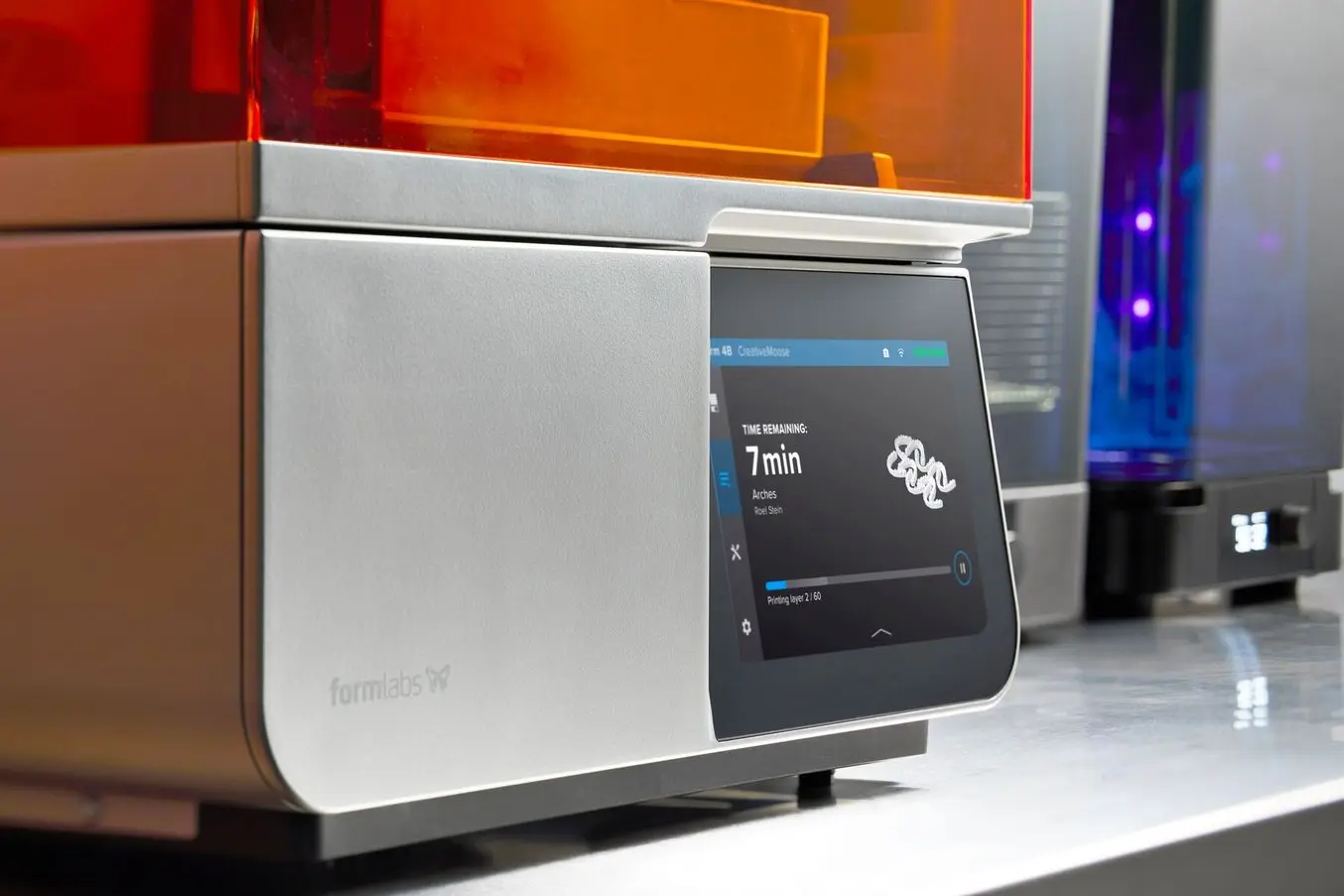
Product Demo: Form 4B+ Dental 3D Printer
Blazing speed meets unmatched accuracy in the next generation of dental 3D printing. Explore the latest innovations in our webinar.

Independently Tested Reliability of Form 4 and Other Resin 3D Printers
Formlabs Form 4 was measured to have a 98.7% print success rate by an independent global leader in product testing. Read a complete description of the test methodology and see the results in our white paper.
Appliances for Multiple Applications
Dr. Baer uses the Form 4B to print appliances for multiple applications, easily swapping out resin cartridges and resin tanks to print different materials. Occlusal splints are one of the most common appliances printed. Dr. Baer says that “Patients really appreciate for us to be able to fabricate a secondary appliance at a minimal cost. We have a lot of patients that travel, so they'll have the primary they keep at home and then they've got a travel night guard, just in case they lose that. And then if somebody breaks it, we can reprint it and have it ready for them before they walk in the office.”
In addition to occlusal splints, models for making retainers and whitening trays are frequently printed. For models, Dr. Baer says, “If we're using the fast settings for Fast Arches, we can print out a model in about 10 minutes, then, within probably 15 to 20 minutes, we've got whitening trays ready for a patient.”
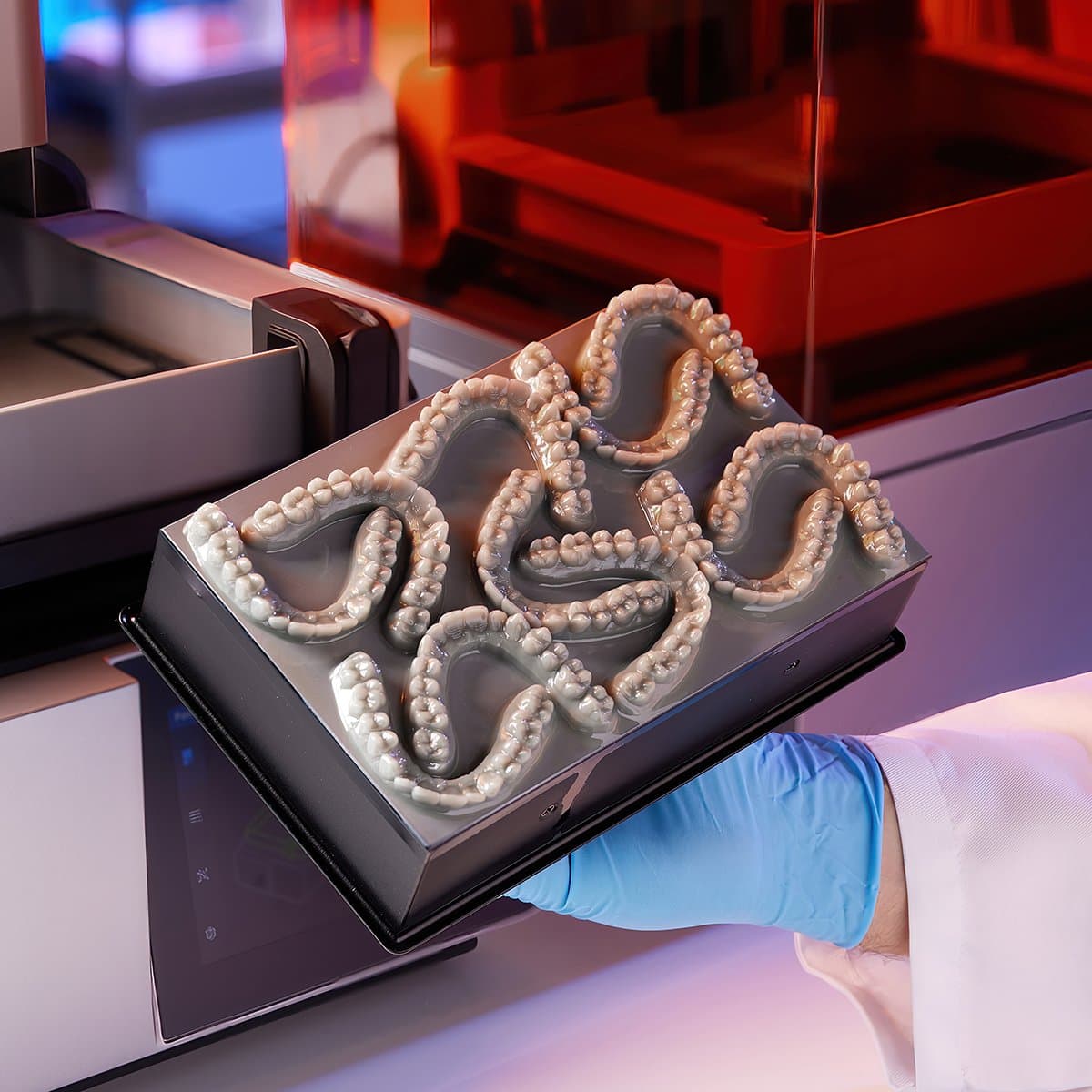
Print 11 arches in 11 minutes on Form 4B with 100 μm layer height and Fast Arch Settings.
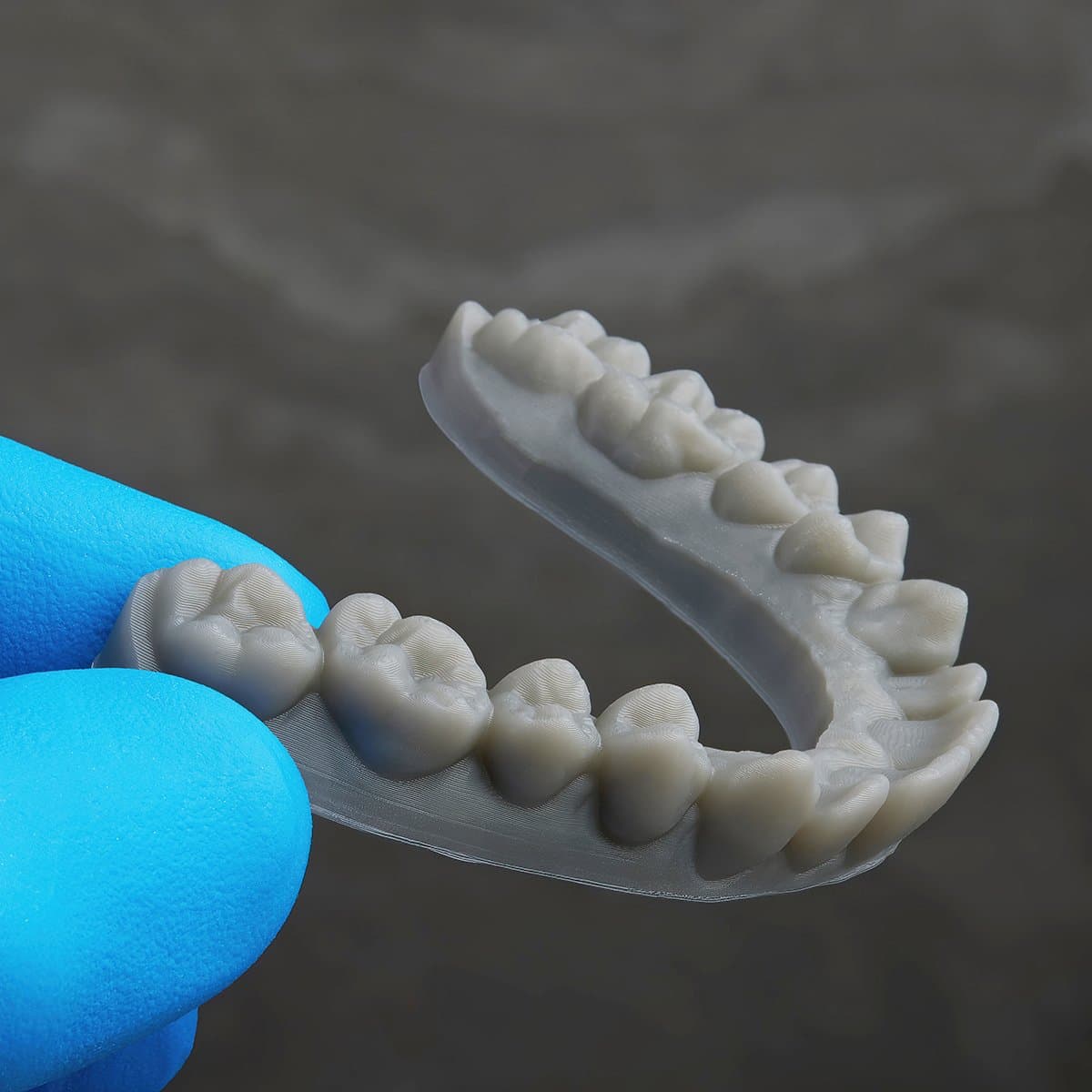
A clear aligner model printed in Fast Model Resin on the Form 4B can be used to thermoform aligners.
Occlusal splints and models for retainers and whitening trays are often the highest-volume appliances for a general practice. Simple workflows for 3D printing make them good applications for those just making the shift to digital dentistry.
Additionally, Dr. Baer prints surgical guides and temporary and permanent restorations. For full-arch cases, he’s had success using Premium Teeth Resin, a nano-ceramic-filled Class II biocompatible material with enhanced aesthetics. Dr. Baer says, ”When we're taking time to print something like full arch temporaries directly to the prepped margins — you just print and deliver it, typically without adjustment. If you're doing an injectable technique, there is a lot of time spent on adjustments and trimming, you might go back and forth to the lab to try to fine-tune stuff. But when it's printed, you basically pop off the supports and it's done. It delivers into the mouth and you can try it in and then you're going directly to cementation.”
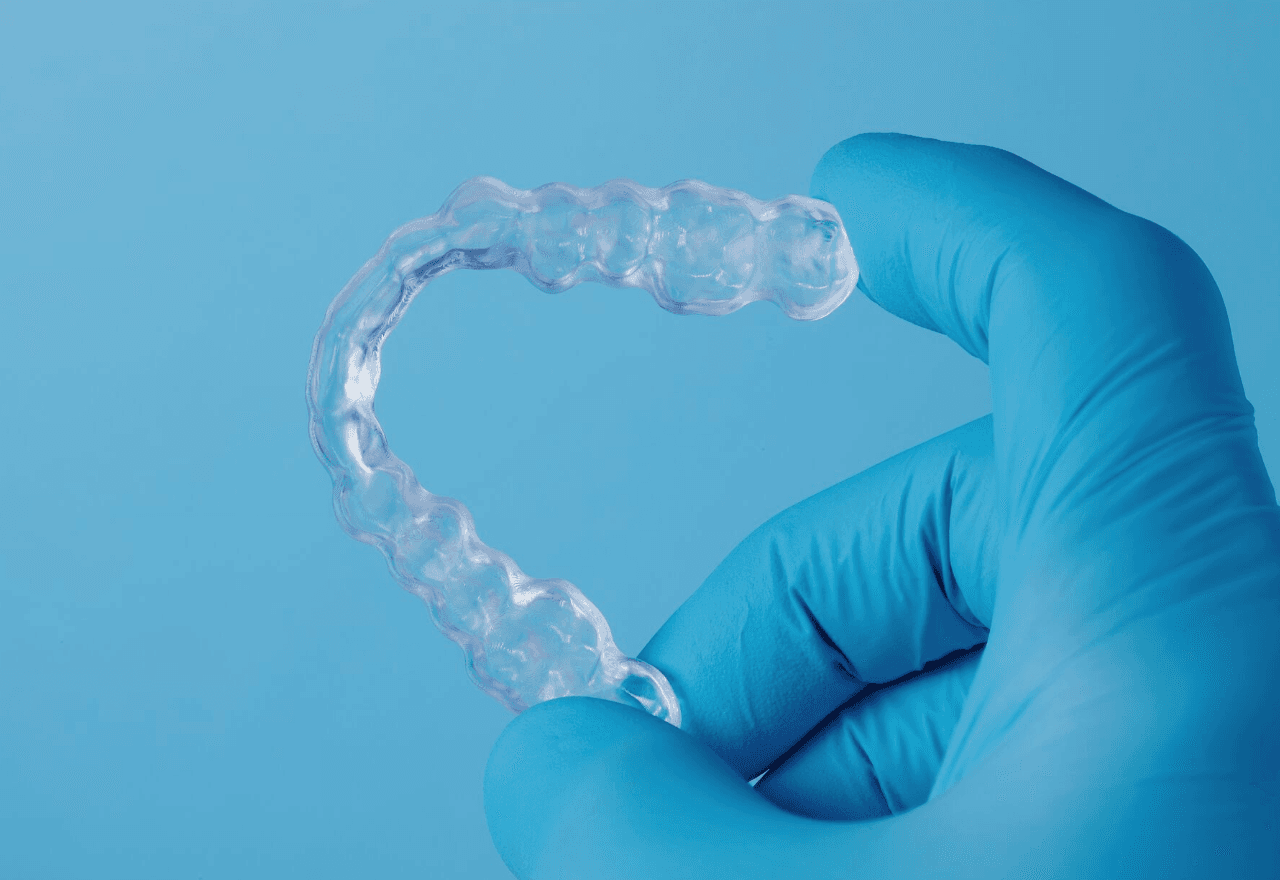
Scan to Splint: Automated and Streamlined In-House Splint Production
Dr. Baer will share a simple, step-by-step, cost-efficient workflow to design and 3D print occlusal splints in-house.
Delivering Smooth, Accurate Appliances
Resin 3D printers print layer by layer, and many have the reputation of showing distinct layer lines on finished prints. These lines can transfer to thermoformed appliances, or require additional post-processing to create the desired finish. Additionally, if supports are needed, extra time for polishing may be required.
“The thing that I'm most surprised by is the quality. Because of the speed, you would expect that they're going to sacrifice something, and it's definitely not a sacrifice in quality. The models actually look better and they're faster.”
Dr. Christopher Baer, DMD, Baer Dental
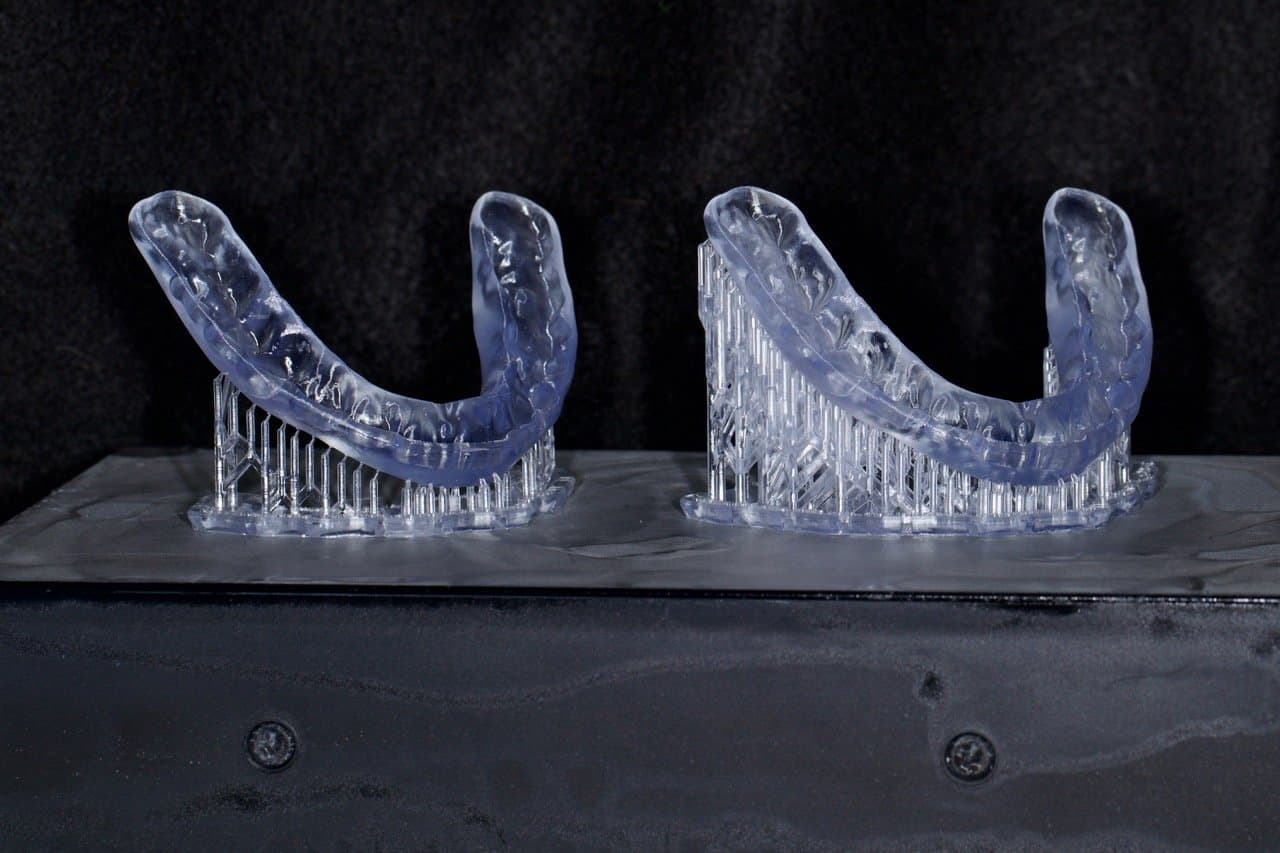
With Form 4B, Dr. Baer produces appliances with smooth finishes and a high degree of accuracy.
Dr. Baer finds that appliances printed on Form 4B are smooth, “The level of detail for Form 4B, especially if we're doing wax-ups, we don't get transference with our material of all the fine lines that are there. That translates to better, clearer appliances.” For temporaries, this can mean that “you don't have those lines that the patients would typically feel on there.”
When presenting models, patients at Baer Dental found the surface quality and accuracy of models produced using Form 4B more attractive. As Dr. Baer says, “It's kind of like the old-school television versus the HD television.”
“Form 4B is definitely more accurate, especially from the retainer fit standpoint. Patients have preferred the fit of retainers from Form 4B just because there's a little bit more anatomic contour.”
Dr. Christopher Baer, DMD, Baer Dental
From visual clarity to fit and feel, the fine surface quality of a 3D printed appliance not only equates to less time and work, but also to patient comfort. Form 4B has a surface accuracy of 95% ±50 μm, consistent across the build platform, so whether a single model or nine models are being printed, they all have a high degree of accuracy.
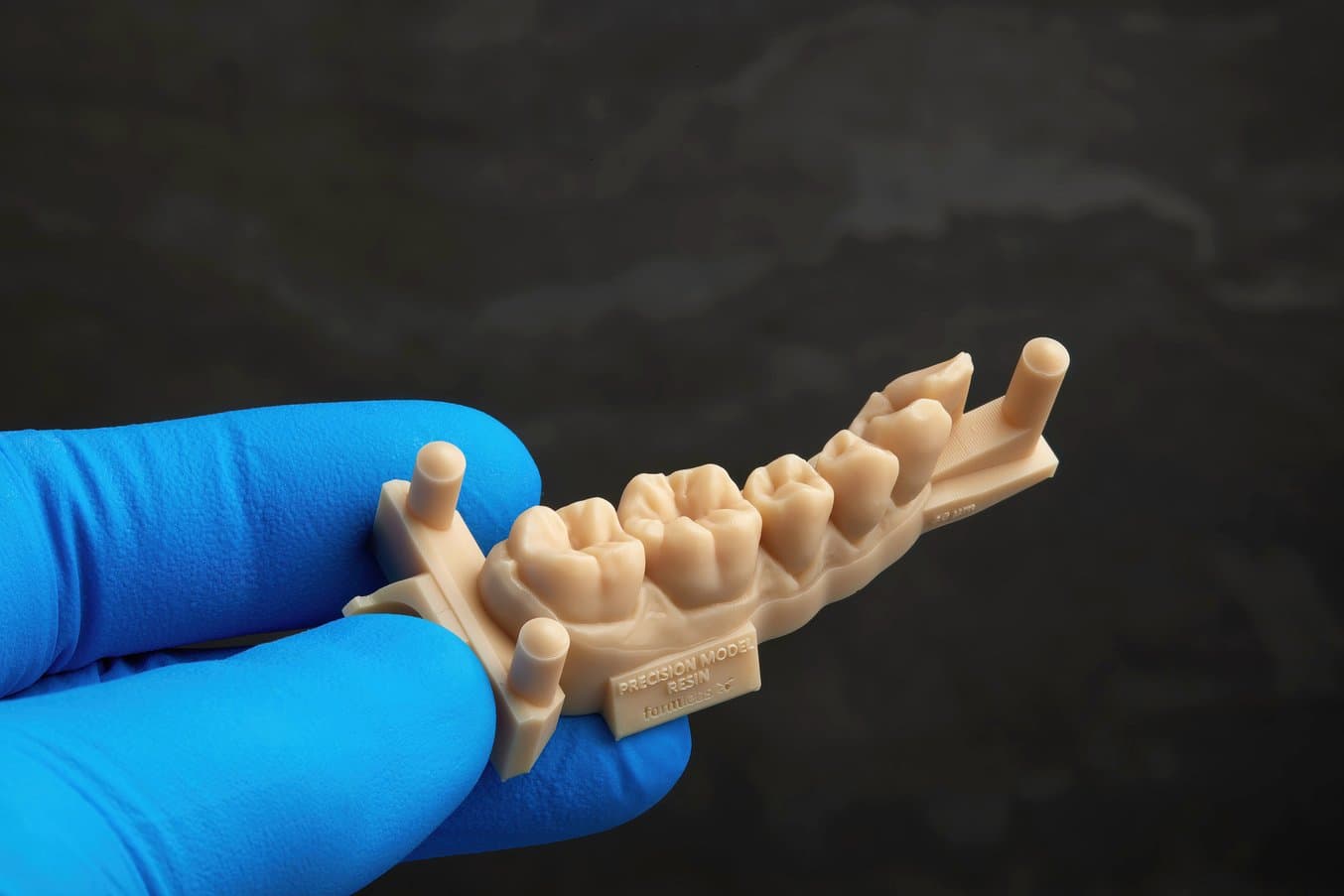
Request a Free Sample Part
See and feel the Formlabs quality firsthand. We’ll ship a free 3D printed sample part printed on Form 4B to your office.
Saving Time and Money With a Dental 3D Printer
“[Form 4B] is a no-brainer, especially if you're looking at trying to implement a high-quality 3D printer in your practice for the first time. It's definitely an affordable printer and it's going to save you money in the long run versus a traditional analog process.”
Dr. Christopher Baer, DMD, Baer Dental
As an early adopter of 3D printing for dental applications, Dr. Baer has utilized printers from a number of manufacturers. When selecting a 3D printer, there are a number of qualities he assesses. Among these are consumables, "Because the consumables add up over time, especially if somebody breaks something or they're not careful.”
Form 4B’s resin tank is rated to print 75,000+ layers with any Formlabs material. Material costs, too, are low, making it easy to try new applications without a large investment.
Print failures, maintenance, and troubleshooting waste valuable time and resources, which is why Dr. Baer says that predictability and durability are key, so “You know that your investment is going to be sound for years to come.” Dr. Baer was struck by the overall quality of the Form 4B “Just from opening and taking it out of the box.” From feeling the resin tank firmly snap into place, to no loose parts with potential for breaking, the quality of the printer was evident.
Basic maintenance is necessary for any 3D printer. When maintenance is required, the intuitive user interface of the Form 4B touchscreen provides clear instructions. For the resin tank, “The cleaning function's pretty nice where it just prints that quick sheet and gets any little particulates, it's incredibly fast.” Rather than scraping the entire resin tank and cleaning it out, “Go in with the tool. Basically, peel that layer off and then you're back to printing.”
Ultimately, Dr. Baer says of the Form 4B, “From printing models to printing a night guard, you're going to save a considerable amount of time versus the Form 3B — and other printers that are on the market.”
Learn more about the Form 4B or talk to a dental 3D printing expert to find the solution that’s best for your business.
